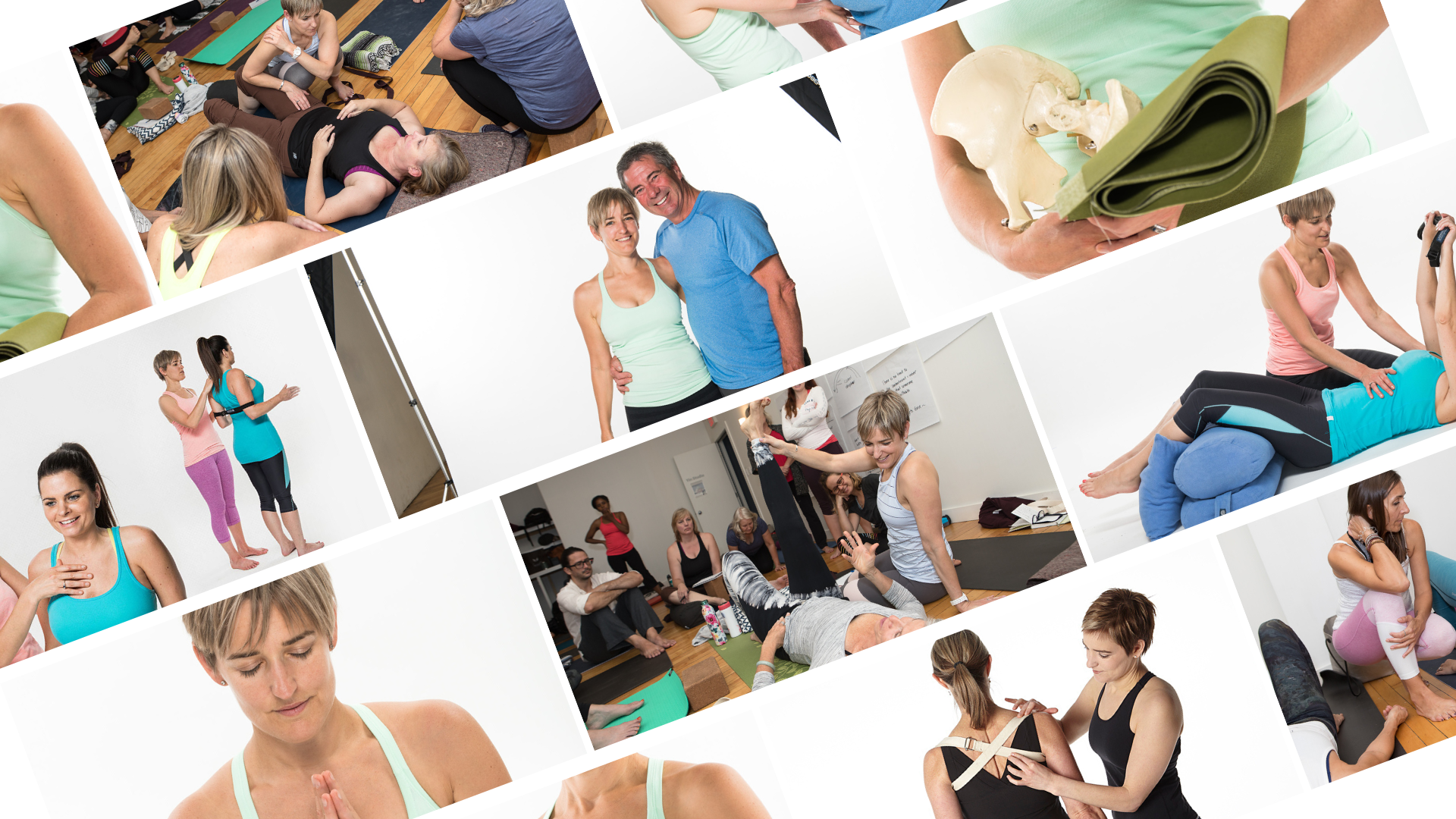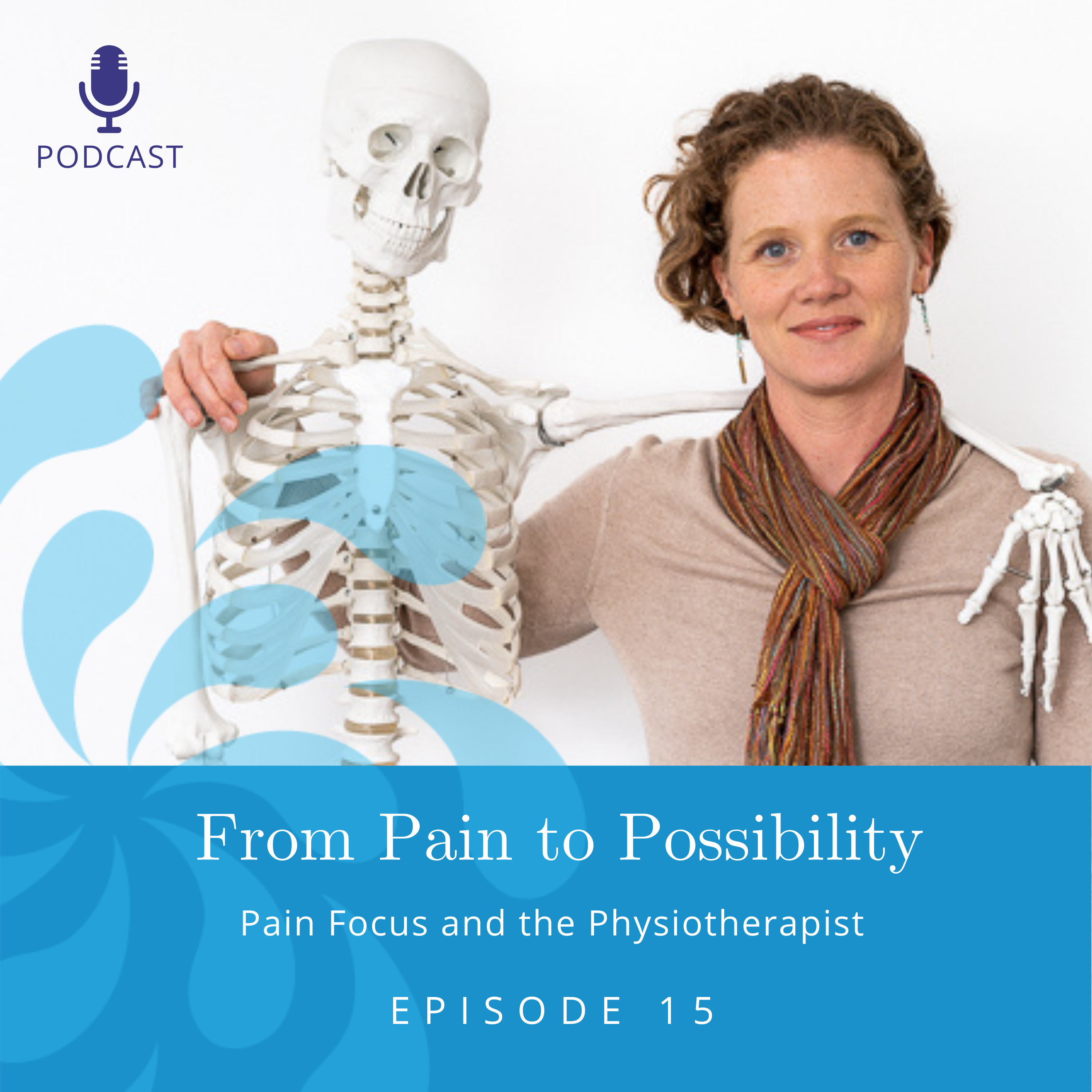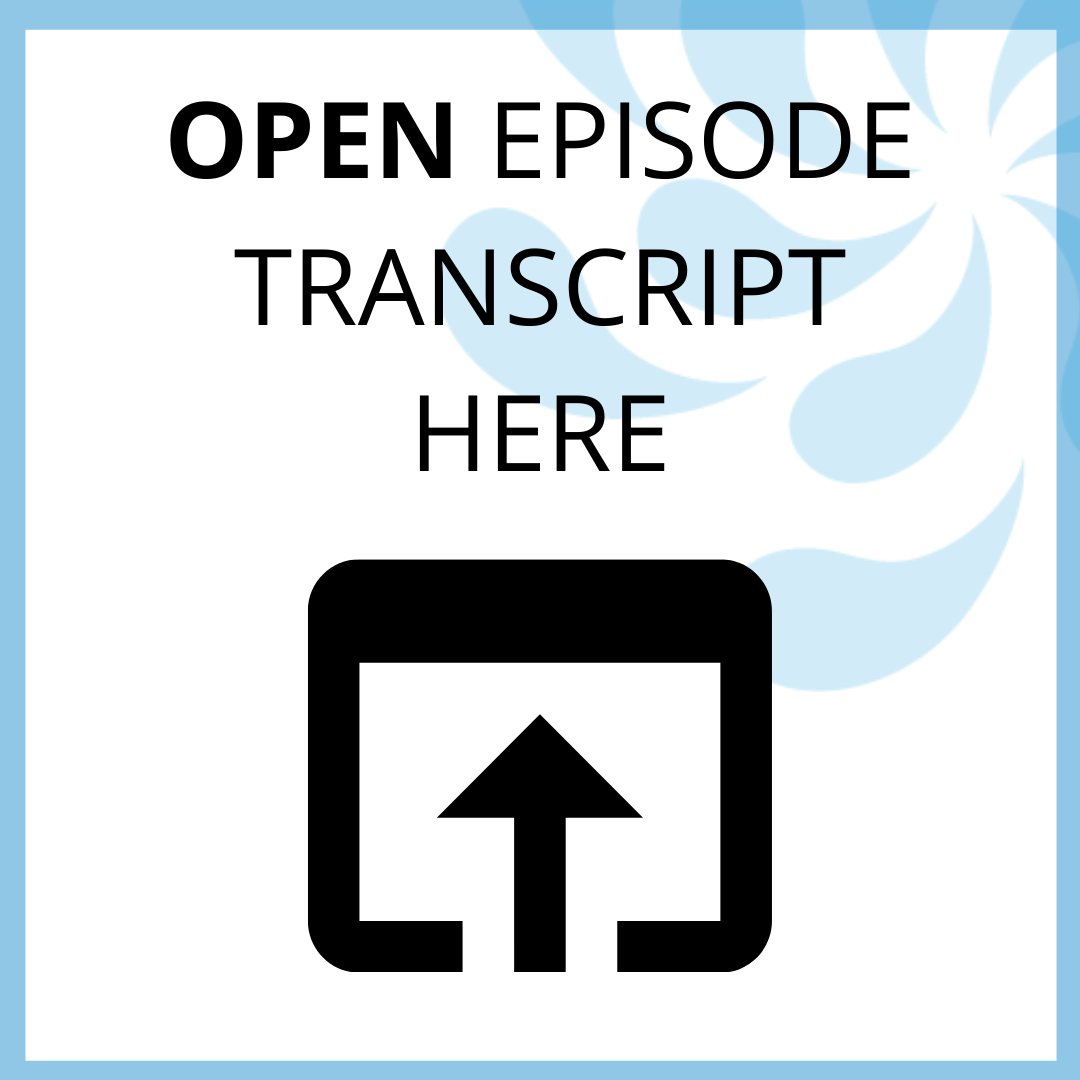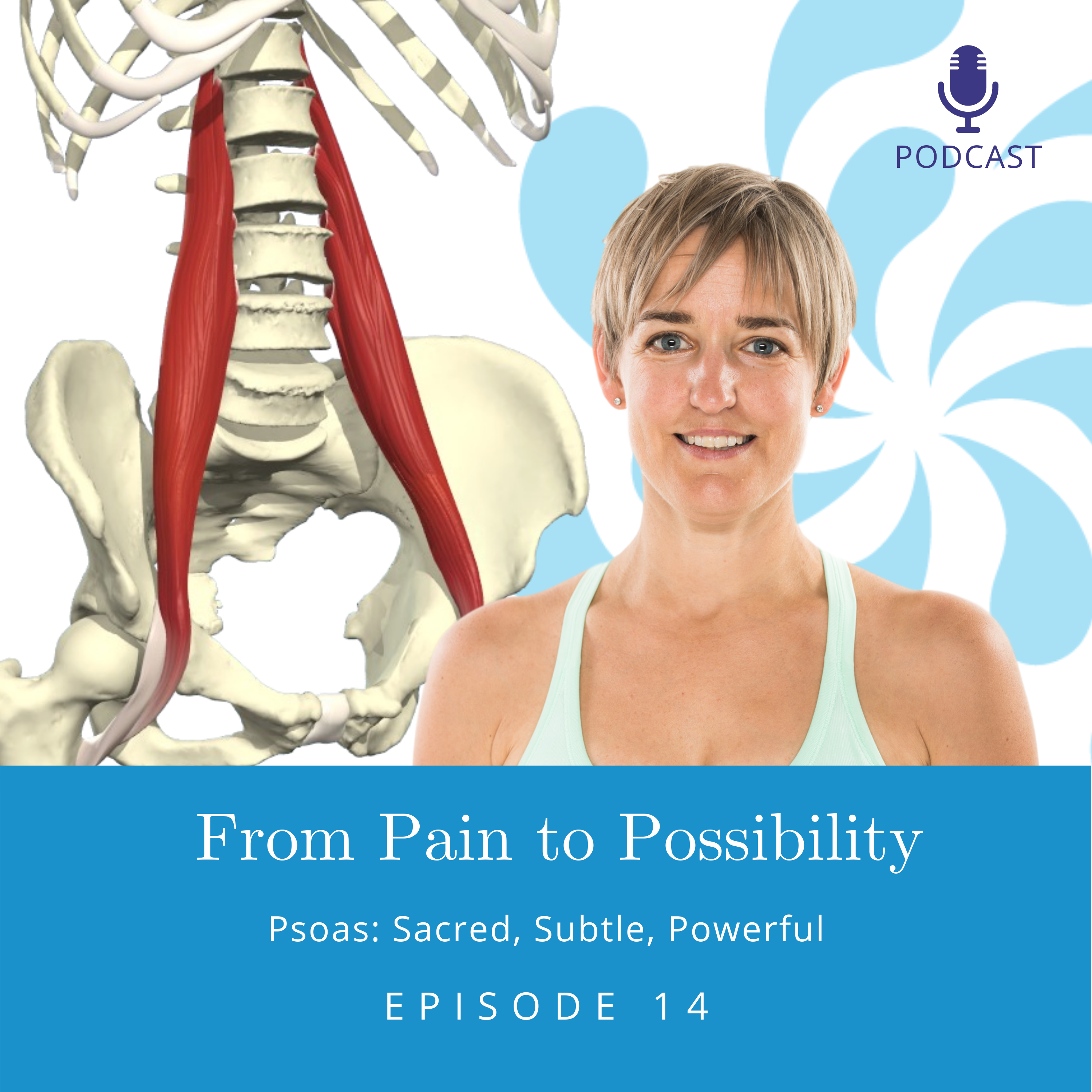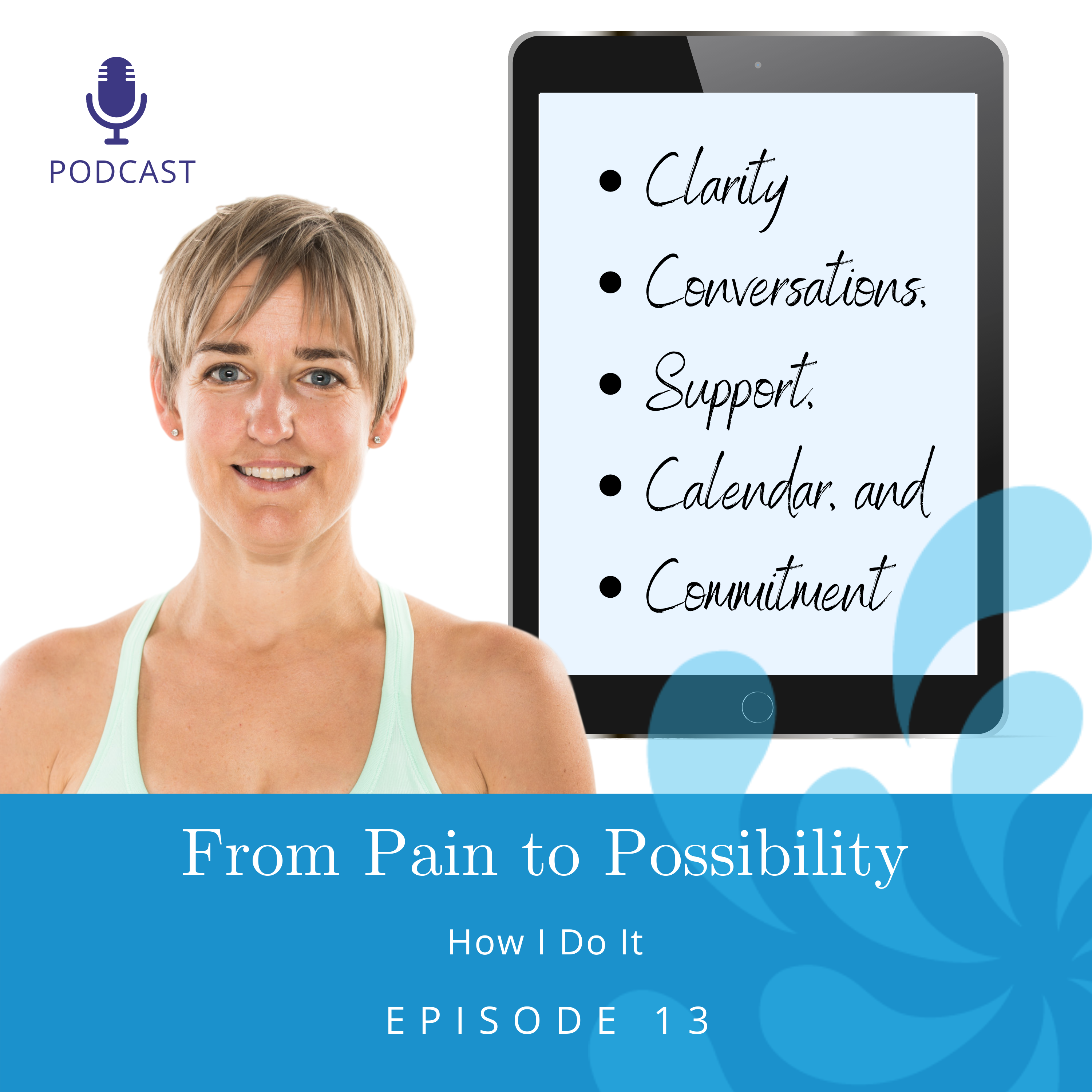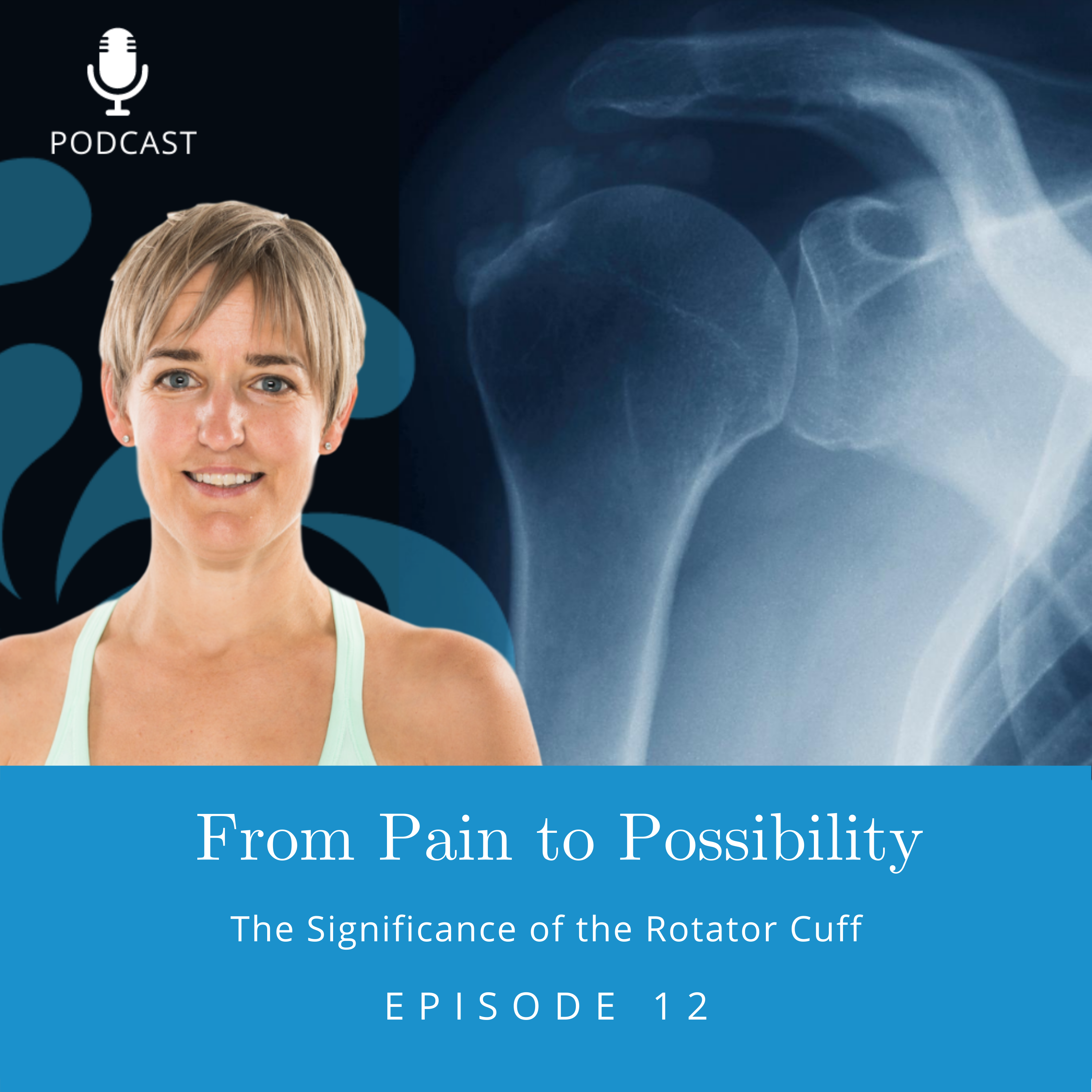EPISODE 15:
Pain Focus and the Physiotherapist
"My job isn't to heal people; it's to support and help people see and feel how they move in a new way." In this episode of From Pain to Possibility, Susi and her guest Kirsten Richardson discuss what is possible when you integrate yoga therapy concepts with physio or physical therapy, the results she has found, and her transition to doing physiotherapy by video.
Kirsten is a registered physiotherapist and a yoga therapist and has served and assisted people from all walks of life to decrease pain and increase function in her fifteen-year career. She has worked with people with orthopedic and neurological impairments from sprained ankles to complete spinal cord injuries. With the addition of yoga therapy principles in her practice, she has noticed a dramatically improved positive response from her clients.
Listen, as Kirsten shares how the addition of yoga therapy widened the lens of her ability, why she believes that a lot of clinicians have a skewed view of patients they feel are pain focused and what she believes presence means in a therapeutic relationship.
Kirsten also discusses how important having fun around client-centered care is.
"An indicator in and of itself isn't back; it's just an indicator," Susi speaks about how fun it is to work with a client to figure out what the indicators mean, and how having the client explore the various messages and signals from their bodies and minds enables them to be part of the solution.
If you want to take this a step further with Susi, check out the series of therapeutic yoga intensives she has coming up. Read more about this at Functional Synergy.
In This Episode:
[01:28] Welcome to the show, Kirsten!
[03:03] Kirsten shares her background in physiotherapy and why she integrated yoga into her practice.
[04:54] Kirsten says that her job isn't to fix people; it's helping people see and feel how they move in a new way.
[07:12] Kirsten believes that the addition of yoga therapy widened the lens of her ability.
[09:49] Do you believe that people use a person's uniqueness as a reason for some types of therapy not working?
[12:50] Listen as Kirsten shares what she would like to say to clinicians about the idea of people being pain focused.
[15:50] Kirsten speaks about clinicians just wanting to get to the physical parts because it's safe and comfortable.
[17:49] Susi discusses more and more physio and physical therapists coming to her, asking for help with clients being pain focused.
[19:37] Listen, as Kirsten shares why she has been able to help people who might have fallen into the category of pain focus.
[22:29] Kirsten speaks about what presence means within a therapeutic relationship.
[24:09] Susi discusses recognizing thought patterns and their impact.
[27:01] Susi shares that indicator in and of itself isn't bad; it's just an indicator and figuring out what the indicator means is where it gets fun.
[29:44] Having the client exploring the various inputs, messages, and signals from their bodies and minds enables them to come to the table as part of the solution.
[30:29] Kirsten speaks about client-centered care and the need for clients to be able to communicate with the therapist.
[33:51] Listen as Kirsten shares some words of wisdom around client-centered care and pain focus.
[35:40] The clearer we can become on who we are and what we value, the clearer we can be through practices of presence to up our game.
[38:01] Thank you for listening.
“The clinician just wants to get to the physical parts. It’s safe and comfortable to deal with a joint that doesn’t move very well or a so-called tight muscle or weak muscle." - Kirsten Richardson
"The power that comes from being listened to is extraordinary." - Susi Hately
"Understanding what you value and how you can best serve without forgetting to serve yourself." - Kirsten Richardson
Connect with Susi
Do you have a question or a desire for more learning opportunities at Functional Synergy? Let's Connect!
Subscribe to my Mailing List
Never miss a new episode!
Subscribe to the Podcast Mailing List below.
“Curiosity in oneself is really important to the recovery process.” - Susi Hately

